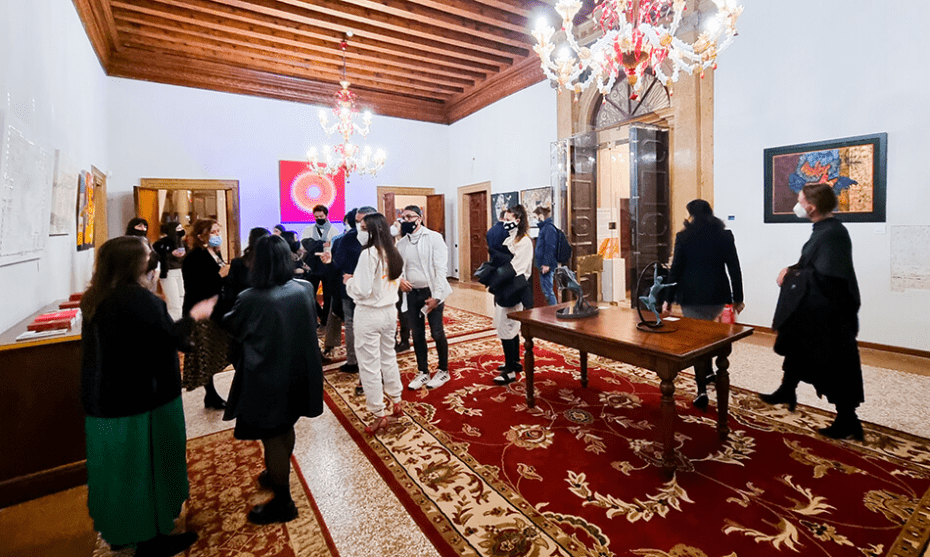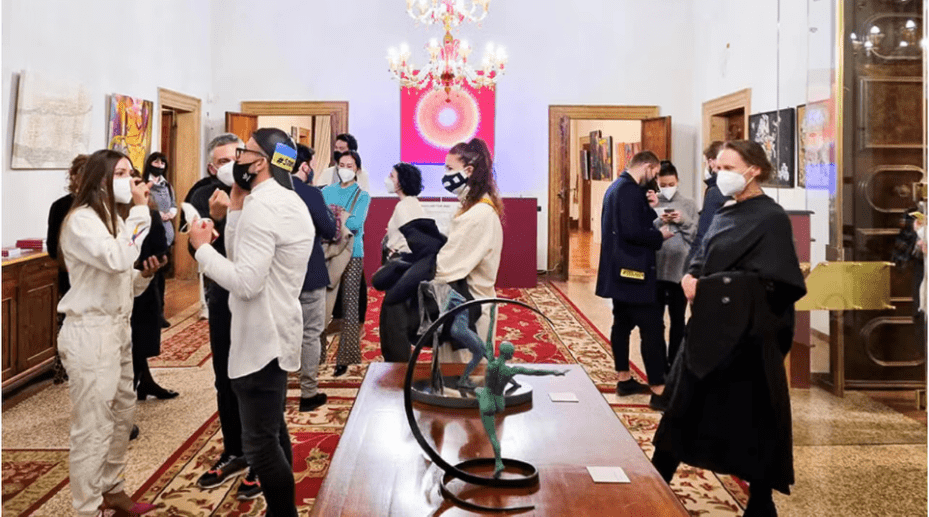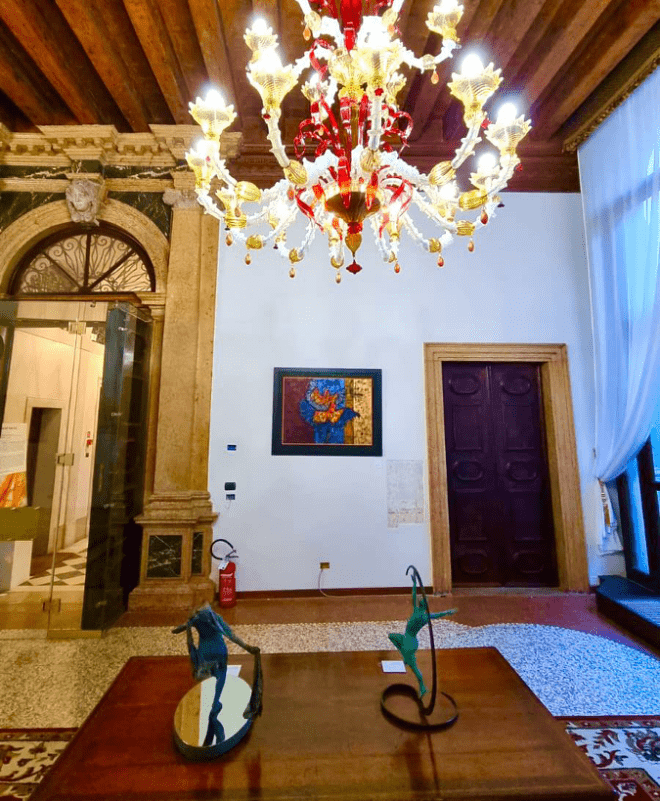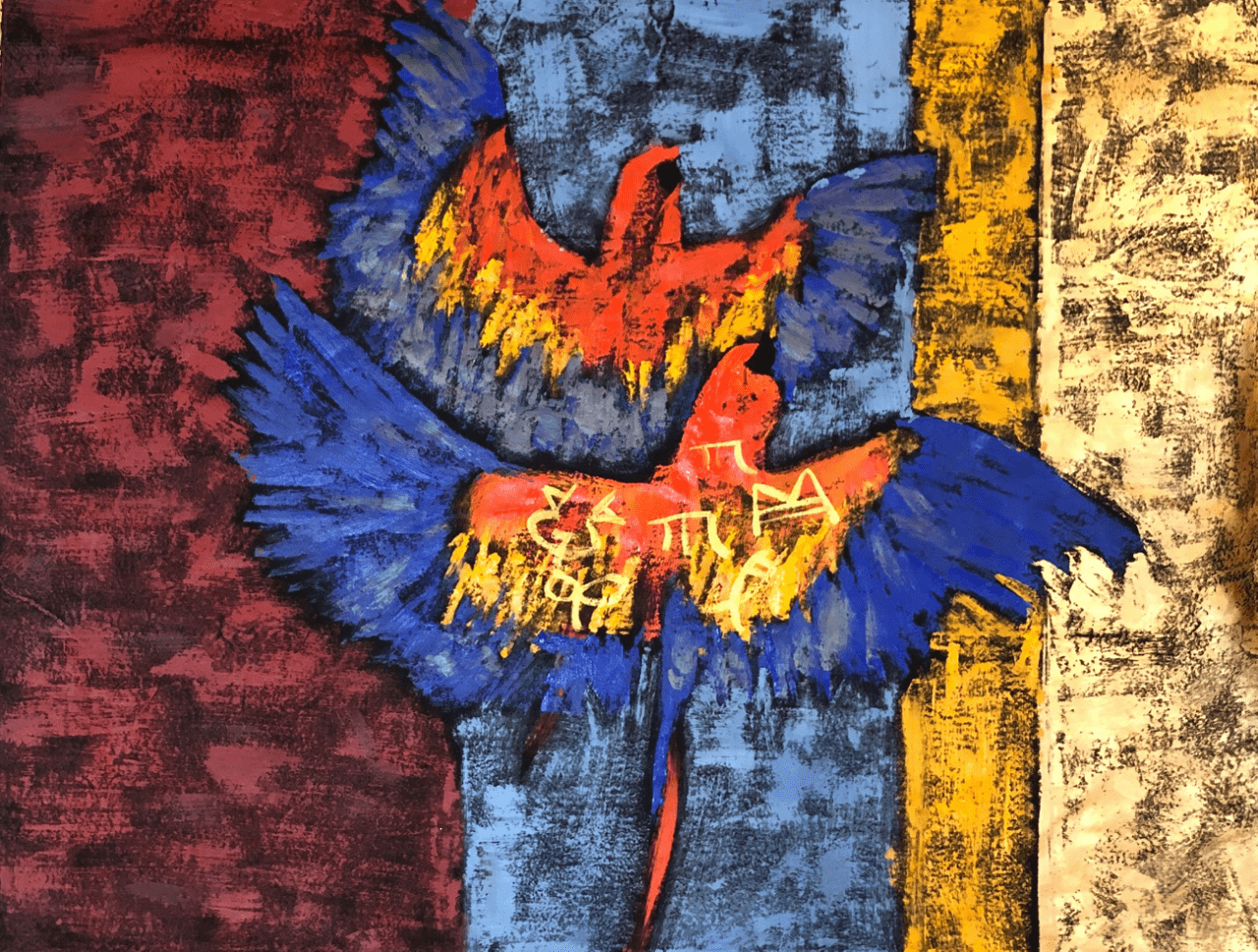环保艺术家王馨曼作品入选意大利CANVAS国际艺术博览会
Environmental artist Sophia Xinman Wang's works were selected for the CANVAS International Art Fair in Italy

Image courtesy of ITSLIQUID Group | Palazzo Bembo (1)

Image courtesy of ITSLIQUID Group | Palazzo Bembo (2)

Image courtesy of ITSLIQUID Group | Palazzo Bembo (3)

Image courtesy of Nature and Art (4) | www.wangxinman.com
近日,在意大利威尼斯CANVAS国际艺术博览会取得巨大成功,这是一个集聚国际摄影,绘画,录像艺术,装置/雕塑和行为艺术为一体的艺术博览会,于2022年3月3日至3月25日在威尼斯THE ROOM当代艺术空间和ITSLIQUID艺术空间 - 威尼斯大运河举行, 展览来自全球30多个国家的100多位艺术家共同参与。CANVAS国际艺术博览会由3个主要部分组成:皮肤项目,失衡和混合身份。"画布"这个词在14世纪的意大利首次使用,它已成为油画最常见的支撑媒介,取代了木板。几个世纪以来,画布的含义发生了变化,从绘画开始,通过摄影和电影胶片,探索人体,再到数字世界。画布是广告素材的共同点,他们可以在此基础上表达自己。我们邀请所有艺术家通过任何类型的媒体分享他们的个人艺术研究,从绘画到雕塑和装置,从摄影到录像艺术和现场表演。
此次展览,展示了国际生态环保艺术家王馨曼的作品“生命与希望-6# 鹦鹉”。该作品由哈佛大学校友,斯坦福大学商学院副主任,自然与艺术基金会主席威廉姆汤普森先生私人收藏提供展示。
十余年来,王馨曼从“人与自然的共生关系”、“保护生物多样性”和“低碳生活方式”三个方面,就环境保护的公共问题进行艺术实践。她运用独特的艺术语言与多种回收材料,融合艺术、环保、自然,科学,大众教育、为一体,通过创造赋予“无用”与新的生命和价值。打造集美感与内涵于一体、震撼人心且意义深远的艺术品。
王馨曼融合多种综合材料和丙烯的艺术作品发人深省。作品中的动物使用了东巴文字,是中国云南图片象形文字的表型和表型组合的组合,距今已有1000多年的历史,至今仍在使用。东巴古籍被誉为文字的“活化石”,是世界上唯一幸存的象形文字,2003年,东巴古籍被列入联合国教科文组织世界记忆名录并进行数字化记录。配合东巴图文,以量子力学公式符号为背景点缀,共同形成时空的立体对比,激发观者审视古今人类生态,引发人类社会对自然、科学、技术关系的思考, 和环境反射。
《生命与希望》是王馨曼典型的系列作品。通过一些“不可控”的偶然色彩关系,构建一个矛盾的“情境”,让观众体验到不同的情绪。这是通过艺术语言的“心理雕塑”,从个体的内心记忆和追求中雕刻出来的物种的诞生和毁灭来完成的。她的的作品试图聚焦于连接天地人的思维。黑白颜色对比,象征悲伤和痛苦,而颜色,隐喻幸福和希望。在她的一些装置中,她使用树枝、剪纸、丙烯颜料、亚麻布、回收塑料及日常生活废旧物品等作为创作媒介,从人类学的角度来看待人类如何建立关系、社区和自然系统。这些严肃的主题在她的作品中得到体现,并以艺术符号的形式重生。王馨曼试图模糊文化、身份、肤色、贫富之间的所有社会差异,通过思考量子力学时间维度,关注脆弱与伟大的转变与变异,探索环境变化对地球生态系统的影响。
空气污染、全球变暖、废物堆积和不合理的消费都关乎每个人的现在和未来。在当前全球变暖的危机时期,可以看出艺术家王馨曼通过画面批判精神,从当前全球生态环境危机的现实,延伸到野生动生存危机的现实形势,实现物质与精神双重批判。作为一名国际生态环保艺术家,十多年来一直用她对艺术的执着,为全球气候危机发声。
The CANVAS International Art Fair (The Exhibit)was held in Venice Italy from March 3 to March 22. The exhibition featured photography, painting, video art, installation/sculpture and performance art from more than 100 artists, from over 30 countries. Sponsored by THE ROOM Contemporary Art Space and ITSLIQUID and held at the Venice Grand Canal, the exhibit featured photography, painting, video art, installation/sculpture and performance art from more than 100 artists, from over 30 countries..
The Exhibit was organized around 3 main sections: Skin Project, Imbalance, and Mixed Identity. The term "canvas" was first used in Italy in the 14th century, and it has become the most common support medium for oil painting, replacing wood panels. Over the centuries, the meaning of the canvas has changed, starting with painting, exploring the human body through photography and film, to the digital world. Canvases are the common denominator for creatives to express themselves. All artists are encouraged to share their personal artistic research through any type of media, from painting to sculpture and installation, from photography to video art and live performances.
This Exhibit showcases the work "Life and Hope-6# Parrot" by international ecological and environmental protection artist Sophia Xinman Wang. The work is presented by the private collection of Mr. William Thompson, a Harvard alumnus, associate director of the Stanford Graduate School of Business, and president of the Nature and The Arts Foundation.
For more than ten years, Sophia Xinman Wang has conducted artistic practice on the public issues of environmental protection from the three aspects of "symbiotic relationship between man and nature", "protection of biodiversity" and "low-carbon lifestyle". She uses a unique artistic language and a variety of recycled materials, blending art, environmental protection, nature, science, mass education, and giving "uselessness" and new life and value through creation.
Xinman's thought-provoking artworks combine a variety of mixed materials. The animals in the work use the Dongba script, a combination of phenotypes and phenotypes of pictorial hieroglyphs in Yunnan, China, which have a history of more than 1,000 years and are still in use today. Known as the "living fossil" of writing, the Dongba ancient book is the only surviving hieroglyph in the world, and in 2003, the Dongba ancient book was included in the UNESCO Memory of the World Register and digitally recorded. With the Dongba Tuwen, the symbols of quantum mechanical formulas are embellished as the background, which together form a three-dimensional contrast of time and space, which stimulates the viewer to examine the ancient and modern human ecology, and triggers the thinking of human society on the relationship between nature, science and technology, as well as environmental reflection.
"Life and Hope" is a typical series of works by Sophia Xinman Wang. Through some "uncontrollable" accidental color relationships, a contradictory "situation" is constructed, allowing the audience to experience different emotions. This is done through the "psychological sculpture" of artistic language, the birth and destruction of species carved out of the inner memory and pursuit of the individual. Her work attempts to focus on the minds of people who connect heaven and earth. The contrast of black and white colors symbolizes sadness and pain, while color, metaphorically, happiness and hope. In some of her installations, she uses twigs, paper cuts, acrylic paints, linen, recycled plastics, and everyday waste items as mediums of creation, looking at how humans build relationships, communities, and natural systems from an anthropological perspective. These serious themes are embodied in her work and reborn in the form of artistic symbols. Sophia Xinman Wang attempts to blur all the social differences between culture, identity, skin color, rich and poor, and explores the impact of environmental changes on the Earth's ecosystem by thinking about the temporal dimension of quantum mechanics, focusing on the transformation and variation of fragility and greatness. life.
Air pollution, global warming, waste accumulation and irrational consumption are all about everyone's present and future. In the current crisis period of global warming, it can be seen that the artist Xinman has realized the dual critique of material and spiritual through the critical spirit of the picture, from the reality of the current global ecological and environmental crisis to the reality of the wild animal survival crisis. As an international eco-friendly artist, she has been using her dedication to art for more than a decade to speak out for the global climate crisis. It is recommended that everyone be good at finding the beauty of nature in busy work, looking for the beauty of ecology in the practice of low-carbon lifestyle, and embracing the beauty of life in the inner feeling of great love.